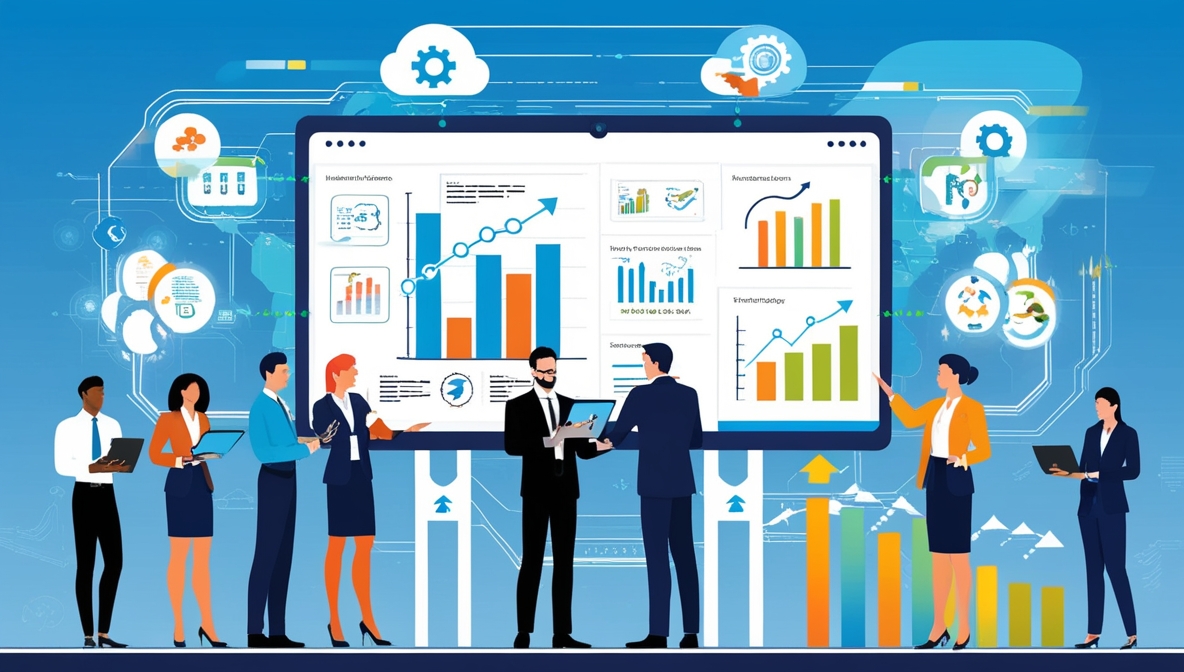IT modernization refers to updating and optimizing an organization's information technology systems to improve efficiency, enhance capabilities, and ensure that the technology aligns with current and future business needs. This process often involves replacing legacy systems with modern solutions, such as cloud computing services, advanced analytics platforms, and newer enterprise software that improve scalability, security, and performance. The aim is to transform outdated IT infrastructure and applications into a more dynamic and agile framework that supports digital transformation initiatives and meets the evolving demands of the business and its customers.
Companies need to modernize their IT for several reasons. Firstly, outdated IT systems can be a major barrier to business efficiency and innovation. They often lack the flexibility and functionality required to adapt to new business strategies or market conditions. Additionally, older systems are typically more vulnerable to security threats, posing significant risks to business operations and data integrity. Modernizing IT infrastructure helps companies reduce operational costs, improve system reliability, and mitigate security risks, which are crucial for maintaining competitive advantage in a rapidly changing technological landscape.
IT modernization is not just a technical upgrade but a strategic investment for business growth. Modern IT infrastructures enable businesses to capitalize on new opportunities and innovations such as big data, artificial intelligence, and the Internet of Things (IoT). These technologies can significantly improve customer experience, operational efficiency, and decision-making processes. By investing in modernization, businesses can enhance their agility, speed up time-to-market for new products or services, and ultimately increase their market share and revenue. IT modernization is a foundational step for any organization looking to thrive in today's digital economy.
Businesses now operate in a digital-first world where the speed of technology evolution can outpace the traditional business cycle. As technology rapidly advances, companies face the challenge of modernizing their legacy systems to compete and thrive. Seamlessly integrating new technologies with existing frameworks is becoming increasingly critical for sustaining business operations and delivering value to customers.
Many organizations struggle with outdated systems that are costly to maintain and hinder agility and innovation. These legacy systems, often rigid and complex, can impede a business's ability to respond quickly to market changes or customer demands, leading to lost opportunities and decreased competitiveness.
The pain points associated with outdated technology systems can create significant operational bottlenecks, escalating maintenance costs and exposing the organization to heightened cybersecurity risks. The longer these systems are in place, the more pronounced the challenges become, making the task of modernization seem daunting and risky.
Embracing IT modernization is imperative for businesses looking to secure their place in a digital-centric future. This guide provides a roadmap for companies to navigate the complexities of upgrading their IT infrastructure, ensuring they remain relevant and can capitalize on new opportunities for growth and innovation. By prioritizing a strategic approach to modernization, businesses can transform their operations and achieve a significant competitive advantage in their respective industries.
Main Contents
- Executive Summary of IT Modernization Needs - A concise overview that discusses the growing necessity for businesses to modernize their IT systems to remain competitive and relevant in the evolving digital landscape.
- Drivers for IT Modernization - Identification and explanation of the key factors pushing businesses towards modernization, including aging technology, the pace of innovation, and the increasing demands of digital business operations.
- Strategies for IT Modernization - Detailed discussion on various approaches to IT modernization, including continuous modernization strategies, the adoption of cloud technologies, and the integration of new digital tools to enhance business processes.
- Modernization Implementation and Operations - Guidance on the practical aspects of implementing IT modernization projects, focusing on operational considerations, project management vs. product management, and the importance of agile methodologies.
- Organizational Change Management (OCM) - Insights on managing the human aspect of IT modernization, highlighting the strategies for effective change management to ensure smooth transition and adoption of new IT systems within the organization.
Key Takeaways
- Continuous Modernization is Crucial - IT systems must be continuously updated and optimized to keep pace with technological advancements and evolving business needs, emphasizing a shift from periodic upgrades to ongoing modernization efforts.
- Strategic Alignment - Modernizing IT is not just about technology replacement; it's about aligning IT infrastructure with business strategies to drive growth and improve operational efficiency.
- Reducing Operational Risk - Modern IT systems are more secure, scalable, and efficient, which helps reduce operational risks such as system downtimes, security breaches, and compliance issues.
- Enhancing Business Agility—Modernized IT infrastructures facilitate greater business agility, allowing companies to respond quickly to market changes and opportunities with innovative solutions.
- Cultural Shift Towards Digital Transformation - IT modernization involves a cultural shift within the organization, requiring businesses to adopt new ways of thinking and operating to leverage modern technology's benefits fully.
This guide is a comprehensive resource for CIOs looking to lead their organizations through IT modernization. By leveraging the strategic approaches detailed in this guide, IT leaders can ensure that their technology infrastructures are up-to-date and aligned with their business's strategic objectives, driving growth and innovation in an increasingly digital marketplace.

